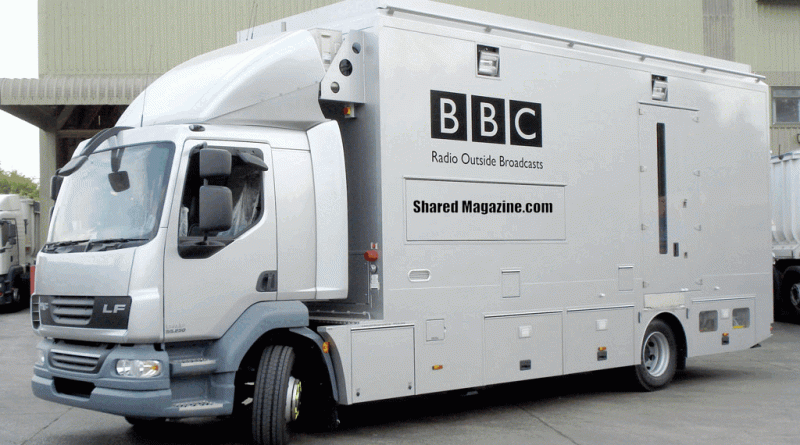Unveiling the Art of Outdoor Broadcasting: Captivating Audiences Beyond Studio Walls
Introduction
Outdoor broadcasting has become an integral part of modern media, enabling the live coverage of events, news, sports, and entertainment activities from various outdoor locations. Unlike traditional studio setups, outdoor broadcasting presents unique challenges and opportunities, making it a specialized field in the broadcasting industry.
The Importance of Outdoor Broadcasting
The significance of broadcasting lies in its ability to bring audiences closer to the action, regardless of location. Whether it’s a breaking news story, a sports event, or a music festival, broadcasting allows viewers to experience events in real-time, creating a sense of immediacy and authenticity.
Tools and Equipment for Outdoor Broadcasting
Successful broadcasting relies on a range of specialized tools and equipment designed to withstand the rigors of outdoor environments. High-definition cameras equipped with weatherproof features ensure that every moment is captured with clarity and precision. Directional microphones help in capturing clear audio amidst outdoor noise, while portable lighting rigs ensure proper illumination, even in low-light conditions. Mobile broadcasting units serve as command centers, housing all necessary equipment for live transmission.
Best Practices for Outdoor Broadcasting
Effective planning and preparation are essential for successful broadcasting. This includes thorough weather monitoring, location scouting, and technical setup. By anticipating potential challenges and addressing them proactively, broadcasters can ensure a seamless live broadcast experience for their audience.
Challenges of Outdoor Broadcasting
Despite its advantages, outdoor broadcasting poses various challenges. Environmental factors such as inclement weather can disrupt broadcasts, while technical issues like equipment failures and connectivity problems can impact the quality of the transmission. Overcoming these challenges requires careful planning, quick troubleshooting, and adaptability.
Case Studies of Successful Outdoor Broadcasts
Examining case studies of successful outdoor broadcasts provides valuable insights into effective strategies and solutions. Whether it’s the coverage of a major sporting event or a cultural festival, studying past successes can help broadcasters refine their approach and overcome common challenges.
Future Trends in Outdoor Broadcasting
The future of outdoor broadcasting looks promising, with advancements in technology driving innovation in the field. From improved equipment capabilities to enhanced connectivity options, broadcasters can expect greater flexibility and efficiency in live outdoor transmissions. As audiences demand more immersive experiences, broadcasting will continue to evolve to meet these expectations.
Mastering Outdoor Broadcasting Techniques
In the dynamic realm of media production, outdoor broadcasting stands out as a captivating avenue for storytelling and engagement. Embracing the challenges of outdoor environments, broadcasters wield specialized tools and equipment to capture the essence of live events, from bustling city streets to remote wilderness. With a keen eye for detail and a commitment to excellence, mastering broadcasting techniques unlocks a world of possibilities, allowing audiences to experience the thrill of events as they unfold in real-time, transcending the confines of traditional studio setups.
Navigating Challenges with Expertise
Despite its allure, outdoor broadcasting presents a myriad of challenges, from unpredictable weather patterns to technical hiccups in remote locations. However, seasoned broadcasters navigate these hurdles with finesse, leveraging meticulous planning and quick problem-solving skills to ensure seamless live transmissions. By embracing innovation and staying attuned to emerging trends, they pave the way for a future where broadcasting continues to captivate audiences worldwide, offering unparalleled access to the world’s most exciting moments.
Conclusion
Outdoor broadcasting remains a vital tool for capturing and sharing live events with global audiences. Despite its challenges, the ability to transmit live audio and video from outdoor locations offers unparalleled opportunities for storytelling and engagement. By embracing best practices and staying ahead of technological advancements, broadcasters can continue to deliver compelling outdoor broadcasts that resonate with audiences worldwide.
FAQs
What is outdoor broadcasting?
Broadcasting refers to the live transmission of audio and video from outdoor locations, such as events, sports venues, and remote areas.
What equipment is needed for outdoor broadcasting?
Essential equipment for broadcasting includes high-definition cameras, microphones, lighting rigs, and mobile broadcasting units.
What are the challenges of outdoor broadcasting?
Challenges of broadcasting include adverse weather conditions, technical issues such as equipment failures, and connectivity problems in remote locations.
How can broadcasters overcome challenges in outdoor broadcasting?
Effective planning, thorough preparation, and quick troubleshooting are key to overcoming challenges in broadcasting. Backup systems and contingency plans can also help mitigate risks.
What are the future trends in outdoor broadcasting?
Future trends in broadcasting include advancements in technology, such as improved equipment capabilities and enhanced connectivity options, leading to more immersive and engaging live broadcasts.



